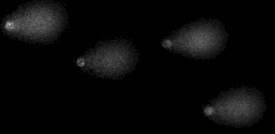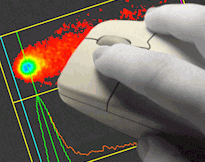Low molecular weight DNA diffusion (LMW) and comet assays
- Details
- Created: Monday, 24 November 2014 15:14
Recently, investigators at Universität Ulm have been investigating the low molecular weight DNA diffusion assay (LMW assay) to measure cytotoxicity in comet assays.
The comet assay is a well-established in vitro and in vivo genotoxicity test. However, there has always been concern that the comet assay (as with all DNA strand break assays) may possibly detect exposure-related cytotoxicity rather than genotoxic effects. This is because DNA degradation is frequently involved in processes leading to cell death. Concurrent measures for cytotoxicity are required for standard genotoxicity testing to assess genotoxicity and to address possible effects of cytotoxicity in comet assay data interpretation.
Typically, histopathology has been accepted as a suitable cytotoxicity detection method when using the in vivo comet assay. By looking at the histology, levels of necrosis and apoptosis can be determined. However, there are other assays available for assessing cytotoxicity.
Here, the LMW assay has been proposed as an alternative, or a supplementation, to histopathology. In this study, the scientists performed in vitro studies with the comet assay and the LMW assay, then compared the effects measured with results from other cytotoxicity tests that were performed under the same experimental conditions.
 Because of the misbelief that “hedgehogs” (also known as “clouds” or badly damaged comets) can be used an indicator of apoptosis, the investigators wanted to find out whether there was a relationship between the occurrence of hedgehogs in the comet assay and DNA diffusion in the LMW assay.
Because of the misbelief that “hedgehogs” (also known as “clouds” or badly damaged comets) can be used an indicator of apoptosis, the investigators wanted to find out whether there was a relationship between the occurrence of hedgehogs in the comet assay and DNA diffusion in the LMW assay.
The scientists performed in vitro experiments with cultured human cell lines (TK6, A549) and comparatively investigated five test substances (methyl methanesulfonate, (±)-benzo[a]pyrene diol epoxide, sodium dodecyl sulphate, menthol and sodium arsenite).
The scientists measured:
• DNA migration (tail intensity) in the comet assay
• the frequency of ‘hedgehogs’ (cells with almost all DNA in the tail) in the comet assay
• DNA diffusion in the LMW assay
• cell viability (trypan blue and fluorescein diacetate/ethidium bromide staining)
• inhibition of proliferation (relative cell counts)
 The comet assay was performed with TK6 cells. Images of 100 randomly selected cells were analysed from one slide per culture. Measurements were made by image analysis (Comet Assay IV, Perceptive Instruments) and DNA migration was determined by measuring the ‘tail intensity’ (% tail DNA). Hedgehogs (comets with almost all DNA in the tail) were recorded on each comet assay slide. One hundred comets were analysed per slide and the percentage of hedgehogs was determined.
The comet assay was performed with TK6 cells. Images of 100 randomly selected cells were analysed from one slide per culture. Measurements were made by image analysis (Comet Assay IV, Perceptive Instruments) and DNA migration was determined by measuring the ‘tail intensity’ (% tail DNA). Hedgehogs (comets with almost all DNA in the tail) were recorded on each comet assay slide. One hundred comets were analysed per slide and the percentage of hedgehogs was determined.
For details of the LMW assay and the other assays used in this investigation, please refer to the original publication.
These in vitro experiments indicated that effects in the LMW assay occur independently from DNA effects in the comet assay and are not related to the occurrence of hedgehogs. Results from the LMW assay were in good agreement with results from viability assays and seem to allow discriminating genotoxic from non-genotoxic substances when appropriate preparation times are considered.
The scientists concluded that the LMW assay is a useful cytotoxicity test that can easily be conducted concurrently with the comet assay by preparing an extra replicate comet slide that is fixed after lysis without alkaline treatment and electrophoresis.
Read the full publication here:
The low molecular weight DNA diffusion assay as an indicator of cytotoxicity for the in vitro comet assay.
Speit G, Vesely A, Schütz P, Linsenmeyer R, Bausinger J. Mutagenesis. 2014 Jul;29(4):267-77.
